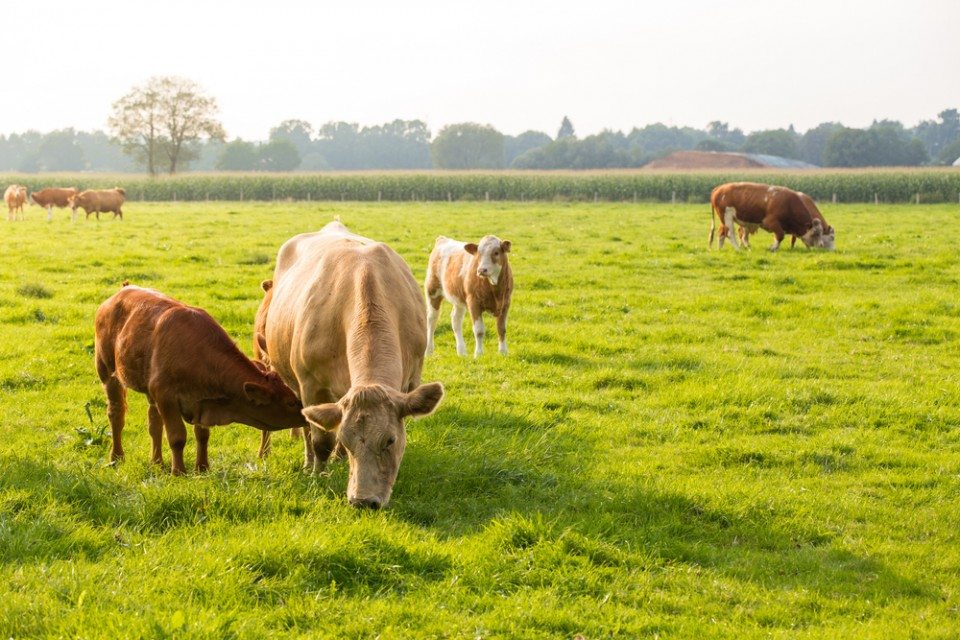Whether purchasing meats, eggs, cheese or milk, quality is a prime factor. To look at it simply, the better an animal was treated, the more nutritious it’s products are going to be for you.
Here is a breakdown of the types of “labels” on quality animal protein:
Organic animal protein
Buying organic animal protein ensures that the animal was not fed genetically modified food, antibiotics, or growth hormones. However, the animal may still be confined to a small living space, and problems with organic protein are becoming more common as the industry grows. Nevertheless, organic is still a better choice than conventional animal protein raised in Concentrated Animal Feeding Operations (CAFOs). Whatever the animal eats goes into the milk, and when you eat it, into your body.
Local animal protein
Visiting a local farm to see how animals are treated is a great way to find good quality animal protein. Often these animals are given plenty of room to roam and practice natural habits. When visiting, you can ask the farmer questions about the use of genetically modified foods, antibiotics and growth hormones, as well as methods of slaughter. Whether an animal is treated humanely or not is always a determining factor when I buy animal protein.
For help in discovering farms that are close to where you live, visit Eat Wild.
Grassfed animal protein
“Grassfed” was once a voluntary label to describe what the animal ate, not its living conditions. In 2007, the U.S. Department of Agriculture changed the requirements for this designation, stating that animals must graze in a live pasture during the growing season in order to use the “Grassfed” label [I]. This was a victory for farmers and ranchers who don’t use feedlots to fatten up animals for the last three or more months of their lives. While grass is the native diet of cows, corn is used purely for this purpose. (And if corn is used to fatten up animals, think of the effects of all the refined corn that’s hiding in our foods!)
According to the relatively new grassfed standard, “grass and/or forage shall be the feed source consumed for the lifetime of the animal, with the exception of milk consumed prior to weaning.” Unfortunately the standard doesn’t restrict the use of genetically modified forage such as alfalfa, bahia grass, or other grasses. Plus, the animal may still be given antibiotics or synthetic hormones to promote growth, or to prevent or treat disease. On the positive side, many farmers take pride in their grassfed status, and they only use items such as antibiotics if truly necessary for the animal’s health.
Other types of labels may accompany the grassfed label in order to reassure the consumer that the animal was fed only grass, and that no hormones or GMOs were used. Still, the only way to ultimately know what “grassfed” means for your food is to ask the butcher or local farmer where you purchase your meat. The grassfed claim is only genuinely reliable if the product has a “USDA Process Verified” label, otherwise the verification is only voluntary.
Obviously, grassfed animal products are a much better choice than conventional. Unfortunately, only a small percentage (an estimated five percent) of our beef comes from grassfed cows. We can only hope that as demand grows, this number will likely increase to supply those who insist on a healthier, more humane product.
So when in doubt, buy local!
Quality Vegetarian Protein
For those of you who are vegetarians or vegans, quality is still important but of course it’s not as hard to come by as with animal products. Choosing organic lentils over conventional is often only a very small price difference. Legumes, nuts, seeds and certain grains are excellent protein decisions that will nourish a family on any budget. We would recommend avoiding vegetarian protein sources such as unfermented soy products, as they are most often GMO and over consumption of soy can adversely affect hormones.
For the meat eaters…you now know the best quality choices, but what about the least quality? After you read our next section on Unhealthy Protein Decisions, it might become easier to say no to that hot dog at your next family BBQ!
Resources
[I] Marquitz, Phyllis. “AMS establishes voluntary standard for grass-fed marketing claims”. Issues Update. National Cattleman’s Beef Association, 2007. Web. May. 2016. <http://www.beefusa.org/udocs/amsextablishesvoluntarystandardforgrass-fedmarketingclaims490.pdf>.





